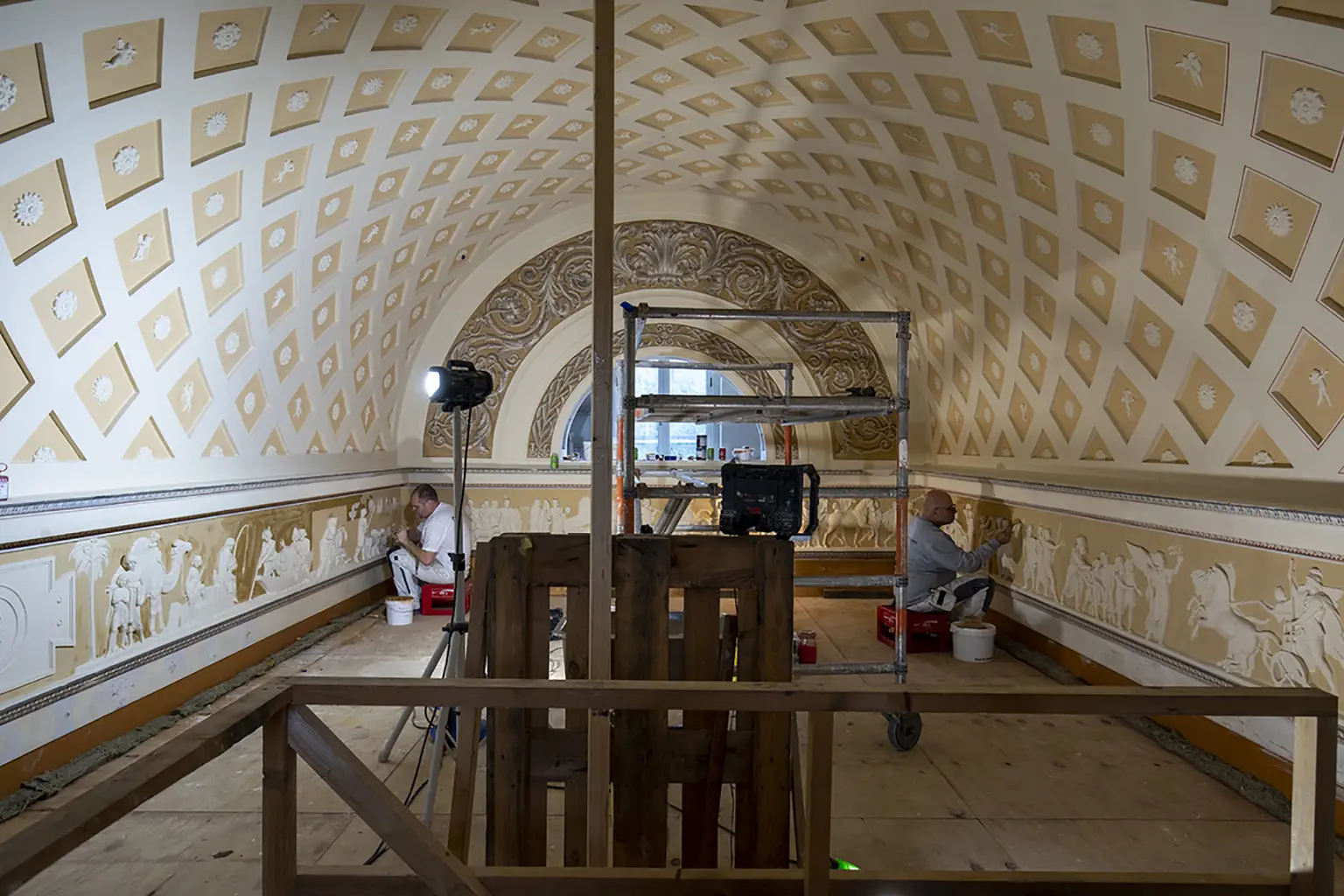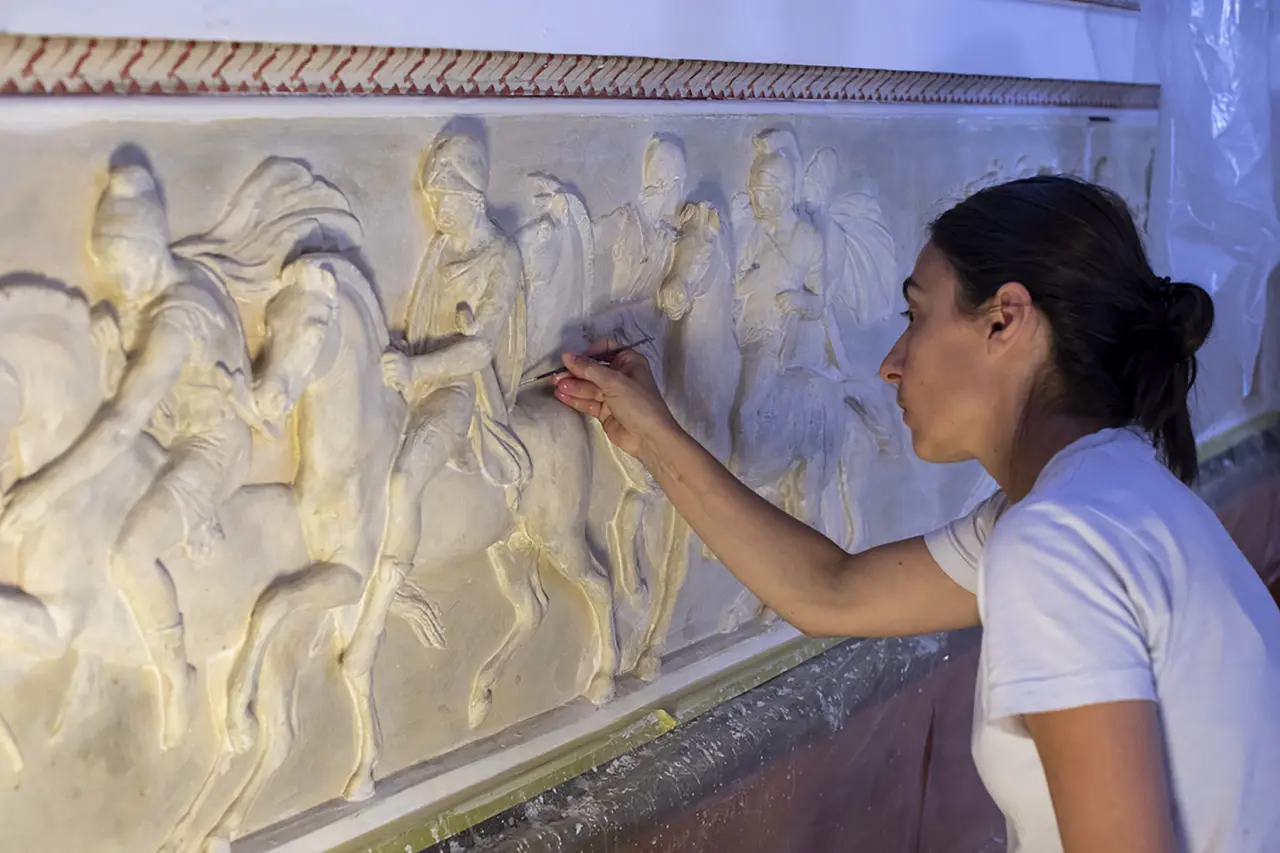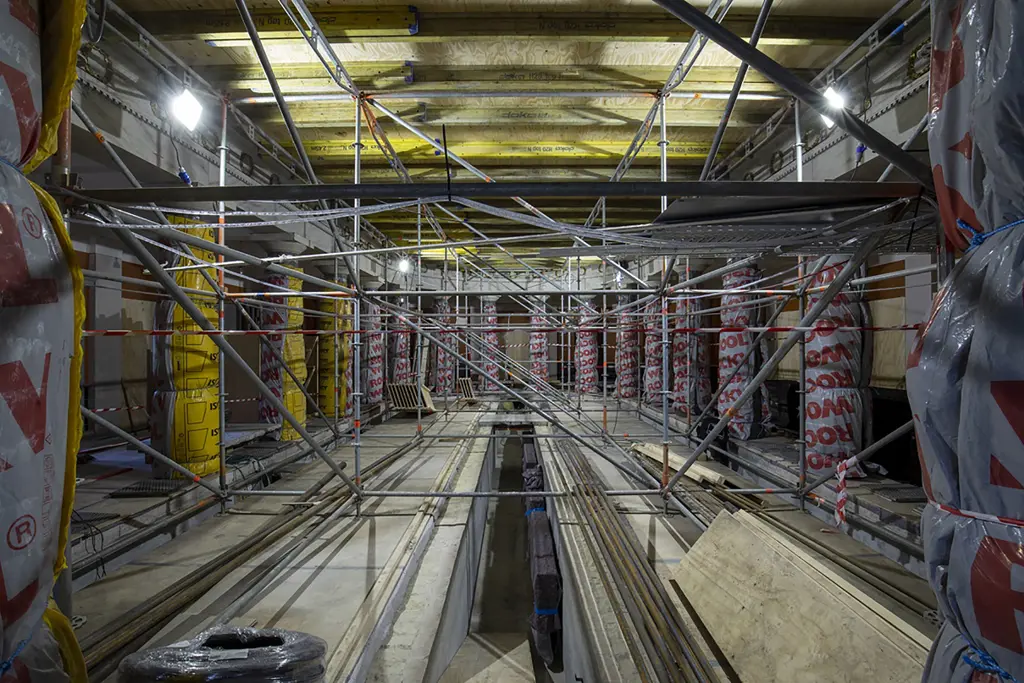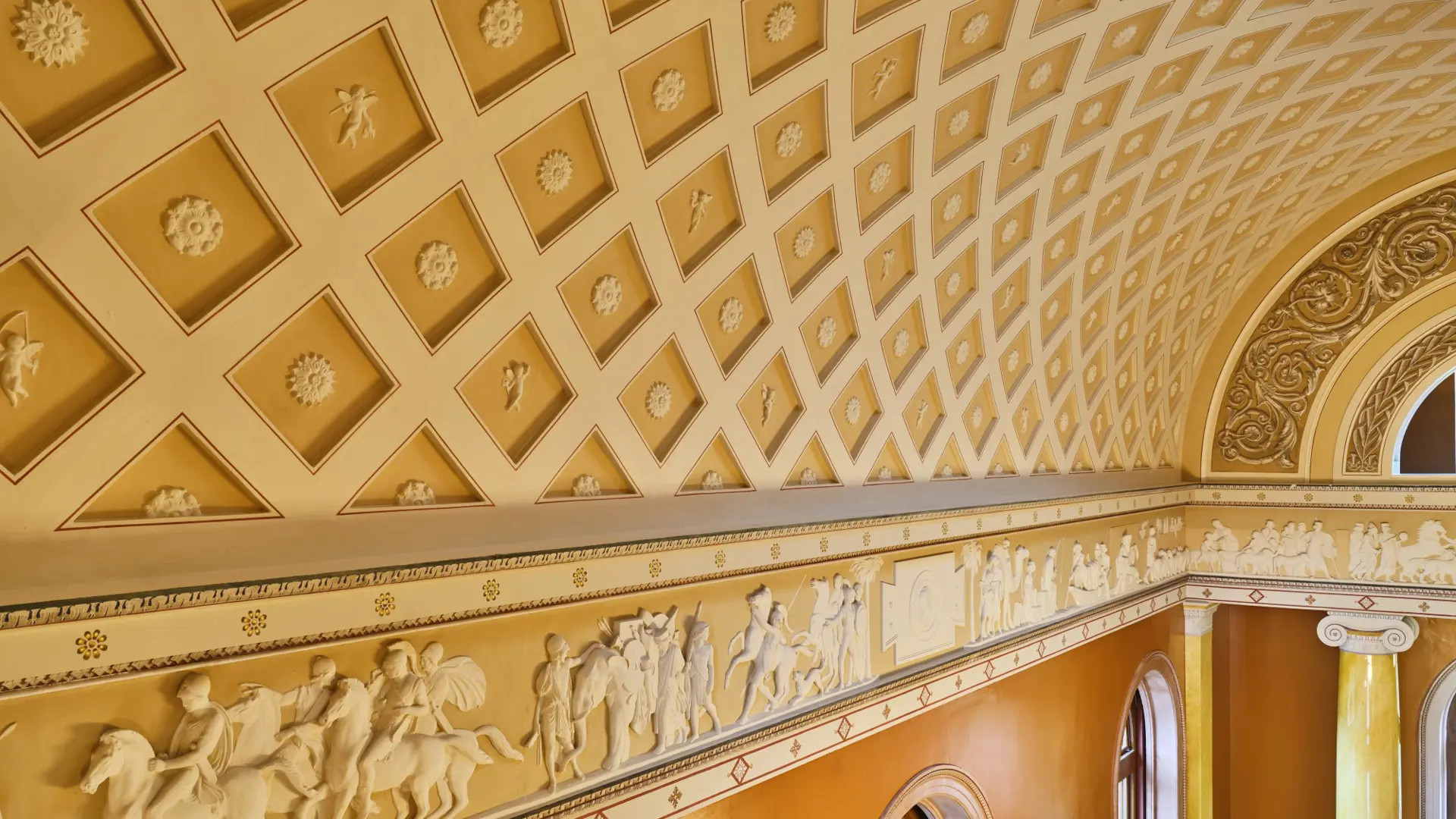
Restoration of Carlsberg Academy
Photo: Anders Sune Berg
Published:
01.05.2024
Between August 2019 and December 2021, the Carlsberg Academy underwent an extensive programme of restoration, refurbishment and technical upgrading. The ambition was to return the Academy to how it originally looked in the mid-1800s, when Brewer J.C. Jacobsen built the villa as his family home. This ambition has been successfully achieved.
In 1854, Brewer J.C. Jacobsen built his private villa as a home for his family on Valby Hill – right in the middle of the Carlsberg brewery site. In 1876, the Brewer bequeathed the Carlsberg Brewery to science and, at the same time, decided that once he and his immediate family were no longer alive, the family’s private villa should become the Carlsberg Academy and serve as both a scientific academy and an honorary residence.
From 1914, the Brewer’s home duly housed eminent scientists including Danish atomic physicist Niels Bohr and Danish astrophysicist Bengt Strømgren. Niels Bohr, in particular, made a number of changes to the Brewer’s “wild” aesthetics while living in the house. Differing stylistic preferences and the ravages of time have also blurred the Academy’s original look.
In summer 2019, the Carlsberg Foundation initiated extensive restoration work on the old buildings on the plot of land, which, in addition to the Italianate-Classical main building, include the Winter Garden, the Pompeii Hall, a terrace and the magnificent gardens.
The aim of the work was to return the Carlsberg Academy to something approaching its original aesthetic look, and to futureproof the buildings, which since 1995 have been a venue for scientific symposiums and conferences.
Book on the restoration of Carlsberg Academy and the Jacobsen brewing family
The book 'Will, Works and Values - J.C. Jacobson's Villa at Carlsberg' was published on the 26th of January 2022. The book illuminates the Carlsberg Academy’s architecture, decorations and restoration, and also tells the story of the Jacobsen brewing family and its huge passion for science, research, art and culture.
Learn more and order the book on Strandberg Publishing's website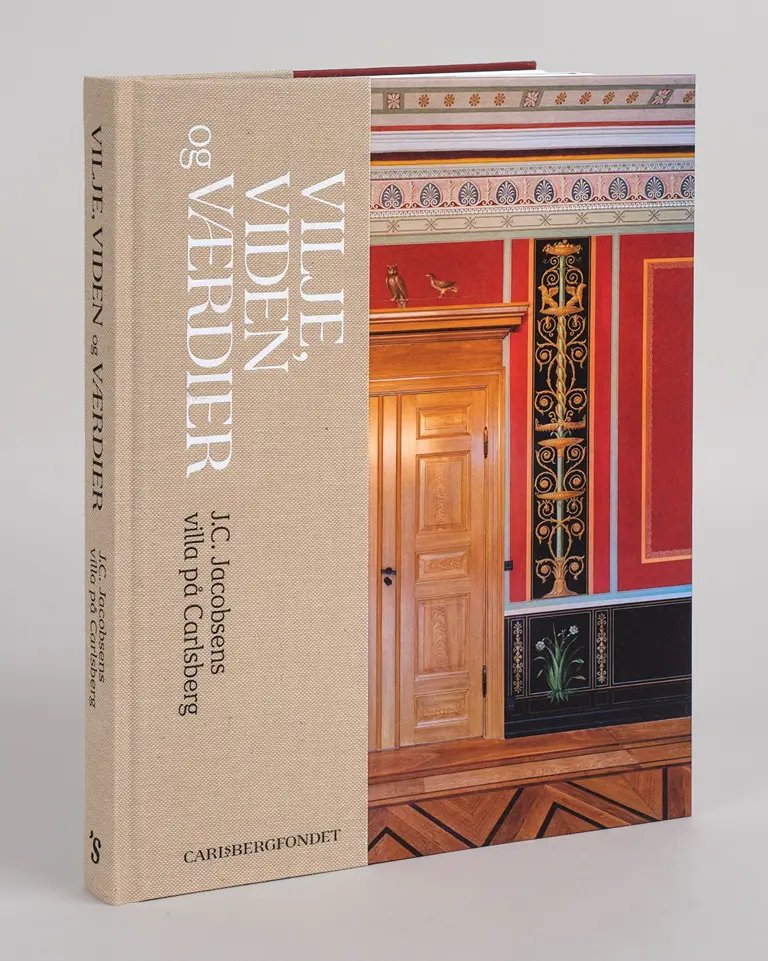
Back to J.C. Jacobsen's innovative style
The restoration of the Carlsberg Academy encompassed all levels of work: from classic paintwork conservation to the establishment of a new kitchen. The assignment was undertaken by a group of 34 specialists, including braziers, smiths, conservators, plasterers and electricians.
The restoration endeavoured to re-establish as many original features as possible.
video

During preliminary investigations, interesting colour-archaeological findings such as marbled walls, grained doors and hidden slate walls emerged. In close collaboration, the restoration painters, conservators and plasterers used traditional materials to bring the wall decorations, stucco ceilings and oak-grained doors more into line with J.C. Jacobsen’s original ideas for the interior.
The precision and details of the interior has been brought closer to the original expression making the experience of the Carlsberg Academy even more impressive. Photo: Karina Tengberg
Wall decorations, stucco ceilings and the oak graining of doors have been recreated in line with the original ideas of J. C. Jacobsen. This recreation has been done in close dialogue with restoration painters, restorers, and plasterers. Photo: Karina Tengberg
The Doric columns of the Pompeji greenhouse made of limestone from Faxe were well-protected during the restoration. The roof construction of the greenhouse had to be cleaned, and approx. 2,100 panes were numbered and carefully dismantled. Photo: Karina Tengberg
As the restoration progressed, it turned out that virtually everything could be recreated. Although some of the interiors from the time of the Brewer have been lost, the restorers had sufficient evidence to be able to recreate the whole. For example, the Captain’s Room, which was the Brewer’s study, was reconstructed with historical furniture from Frederiksborg Castle.
The original wall decorations in the Captain’s Room were painted over during Niels Bohr’s residency from 1931 to 1962. Using a special elastic plastic matting, the conservators removed Bohr’s overpainting and recreated the beautiful original wall decorations. With the addition of the historical furniture from Frederiksborg Castle, the study is now back in accord with how the Brewer conceived the room.
video

Refurbishment and technical upgrading
Besides the return of the interior to the time of J.C. Jacobsen, major logistical and structural improvements were carried out for the long-term preservation of the building. Among other things, new ground decks and a new roof and drains were implemented. Discreet improvements of the indoor climate and energy consumption were also carried out.
The first stage of restoration of the Carlsberg Academy was completed in December 2021.
The Carlsberg Academy will shut down again in 2023 due to further restorations.
From 2024, the doors will reopen for conferences and scientific meetings and activities.
video

